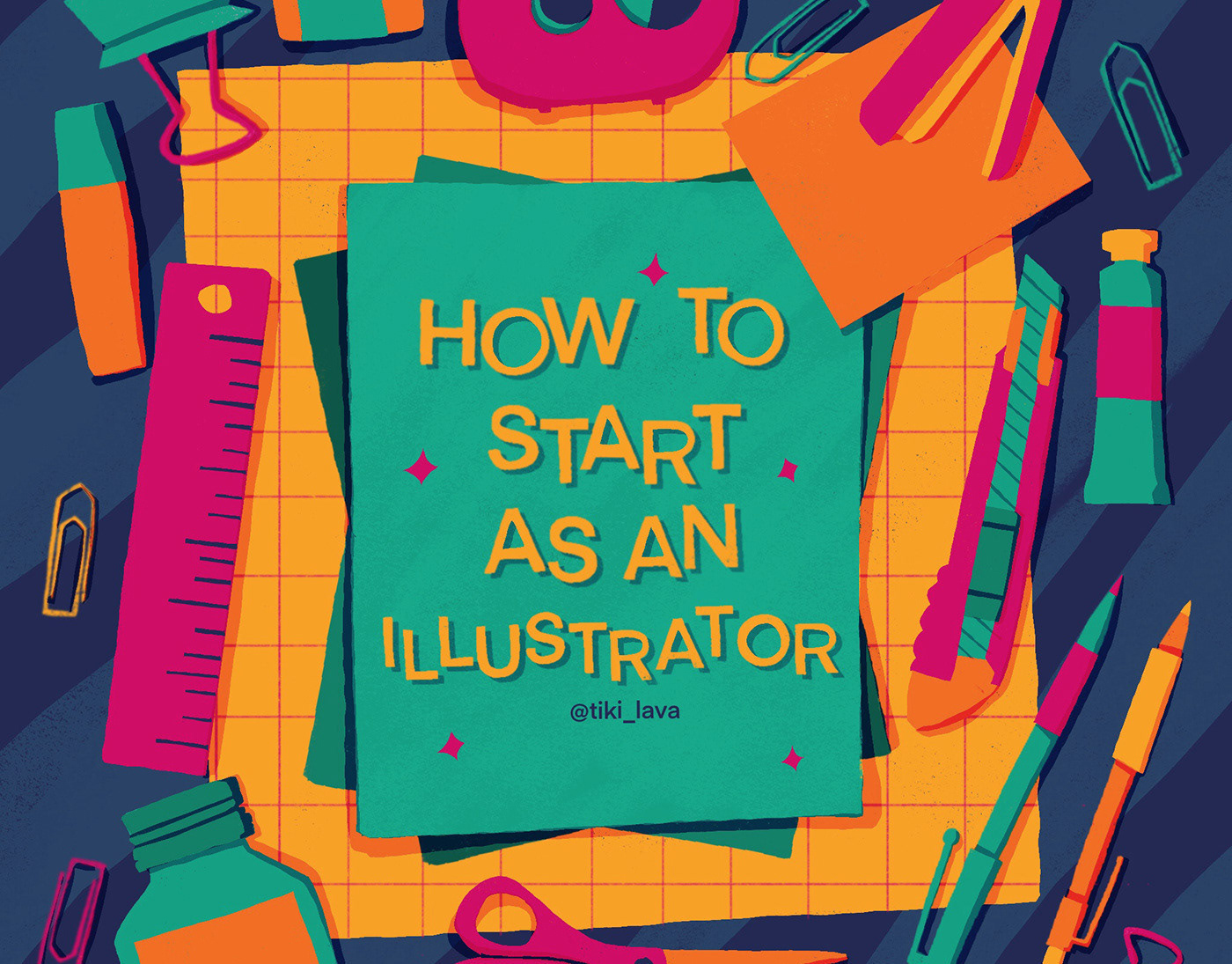Every artist has her/his own way of approaching Color Theory . In this post I will be elaborating mine.
Since I am a digital artist I will be speaking from that point of view. (Most of the people reading this post will be artists, who are aware of the basic principle of color theory. I am still going to start with the basics so that later when I share a few tips and tricks you can refer to this)
In the next post I will be elaborating how to use colors and make interesting color schemes.
But first let’s start with the basics:
Since I am a digital artist I will be speaking from that point of view. (Most of the people reading this post will be artists, who are aware of the basic principle of color theory. I am still going to start with the basics so that later when I share a few tips and tricks you can refer to this)
In the next post I will be elaborating how to use colors and make interesting color schemes.
But first let’s start with the basics:
Primary Colours : In the RYB color wheel, primary colors are colors that can’t be mixed from other colors. There are three primary colors:
RED . BLUE . YELLOW
RED . BLUE . YELLOW
Secondary Colours: Secondary colors are colors that result from mixing two primary colors.In the RYBcolor wheel, the secondary colors are:
VIOLET = Red+Blue. ORANGE= Red+Yellow. GREEN=Blue+Yellow
VIOLET = Red+Blue. ORANGE= Red+Yellow. GREEN=Blue+Yellow
Tertiary Colour: In total there are six Tertiary Colour. They are created by mixing equal parts of a primary and secondary Colour together.
BLUE-VIOLET, RED-VIOLET, RED-ORANGE, YELLOW-ORANGE, YELLOW-GREEN, BLUE-GREEN.
BLUE-VIOLET, RED-VIOLET, RED-ORANGE, YELLOW-ORANGE, YELLOW-GREEN, BLUE-GREEN.
Hue COLOR is the general term we use to describe every hue, tint, tone or shade we see. White, Black and Gray are often referred to as a color.
A HUE refers to the dominant Color Family of the specific color we're looking at. White, Black and Grey are never referred to as a Hue.
There is always a confusion between Hue and color. So we can differentiate them like this: Hue refers to the origin of the color we see. Think of the Hue as one of the six Primary and Secondary colors. In other words, the underlying base color of the mixture you're looking at is either
Yellow, Orange, Red, Violet, Blue or Green.
A HUE refers to the dominant Color Family of the specific color we're looking at. White, Black and Grey are never referred to as a Hue.
There is always a confusion between Hue and color. So we can differentiate them like this: Hue refers to the origin of the color we see. Think of the Hue as one of the six Primary and Secondary colors. In other words, the underlying base color of the mixture you're looking at is either
Yellow, Orange, Red, Violet, Blue or Green.
Burgundy = RED
Pink = RED
Navy = BLUE
Rust = ORANGE
Cool Gray = It might be BLUE or even PURPLE or GREEN - Really look at it to find the base colour
Warm Brown = It might be ORANGE,or RED or YELLOW
What if a color is truly an in-between Tertiary: such as a Yellow/Green where neither Yellow nor Green dominate? Obviously you could describe it as a Yellow/Green Hue and you wouldn't be wrong. The color has a Yellow Hue, leaning strongly toward Green.' Indeed this clarifies that the mixture began with the Primary Yellow, and gradually added the Secondary color Green.
Neutrals also contain a Hue depending on their originating color. Mixing White, Grey or Black with a Hue in various ratios will hep create a Neutral color. On the other hand, pure Black, pure White and Pure Grey do not contain a Hue.
Here are a few examples of how you can look at a color closely to decide which is the Dominant Hue. One you've established this in your mind, it becomes much easier to recreate the color or mix it further.
Here are a few examples of how you can look at a color closely to decide which is the Dominant Hue. One you've established this in your mind, it becomes much easier to recreate the color or mix it further.
Complementary Colour:
Are those that enhance each other. They are opposite colours and are located directly across from one another on the colour wheel.The colour wheel consist of six basic set of complementary colours. Using these colour combinations give your projects high contrast.
Analogue Colours:
They includes three neighbouring colour. They are next to one another on the colour wheel and share one dominant colours (the one in middle) The colours schemes achieve a harmonious look and feel.
Monochromatic
Three shades, tones and tints of one base color. Provides a subtle and conservative color combination. This is a versatile color combination that is easy to apply to design projects for a harmonious look.
Tetradic
Four colors that are evenly spaced on the color wheel. Tetradic color schemes are bold and work best if you let one color be dominant, and use the others as accents. The more colors you have in your palette, the more difficult it is to balance,
Warm and cool colors
The color wheel can also be divided into warm and cool colors. The warmth or coolness of a color is also known as its color temperature. The color combinations found on a color wheel often have a balance of warm and cool colors. According to color psychology, different color temperatures evoke different feelings. For example, warm colors are said to bring to mind coziness and energy, while cool colors are associated with serenity and isolation.
Warm colors are the colors from red through to yellow. These colors are said to bring to mind warmth, like the sun.
Cool colors are the colors from blue to green and purple. These colors are said to bring to mind coolness, like water.
Warm Colours: Yellow, Red, Orange
Cool Colour: Blue, Green, Violet.
Tint
A Tint is sometimes also called a Pastel. But to be precise, Color Theory defines a True Tint as any Hue or mixture of pure colors with only White added.
A Tint lightens the color, but it doesn't make it brighter. Even though the color may appear brighter, in actual fact it is not. In other words, it remains exactly the same color, only a paler version. Furthermore, even a small amount of White added to a color, transforms it into a Tint.
Therefore a Tint can range from slightly lighter than your original color, all the way to White with barely any of the color mixed in.
In addition, a true Tint contains no Gray.
To create a true Tint, simply add White to any individual color on the Color Wheel or any of those pure colors mixed together.
Tone
Color Theory defines a True Tone as any Hue or mixture of pure colors with only Gray added. To be precise, this definition considers Gray as truly neutral. In other words, there are no additional pigments in the Gray other than White plus Black.
A neutral mixture of Gray, no matter how light or dark, will tone down the intensity of any color. Adding too much grey will make the color loose it’s brilliance
Shade
Color Theory defines a True Shade as any pure Hue or mixture of pure colors with only Black added. In other words, it contains absolutely no White or Gray.
A Shade darkens the color. It remains the same Hue only a darker version. As has been noted above, even a small amount of White or Gray added to a color, transforms it into a Tone.
Therefore a Shade can range from slightly darker than your original color, all the way to nearly Black with barely any of the color mixed in.
I hope you found this useful.
In the next post I will be talking about
How to use color?
and How to create easy color schemes?.
If you have any questions you can drop them in the comment section and will answer them in the next post.
In the next post I will be talking about
How to use color?
and How to create easy color schemes?.
If you have any questions you can drop them in the comment section and will answer them in the next post.
You can follow me on Instagram for more updates


